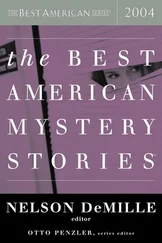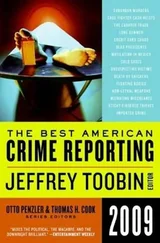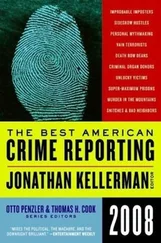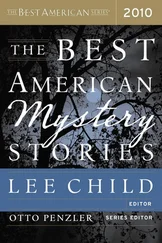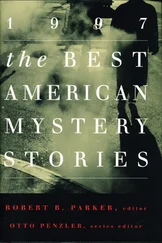“What does their mother think?”
“Their mother is dead,” Banbrock corrected me. “My wife is their stepmother. She is only two years older than Myra, my older daughter. She is as much at sea as I.”
“Did your daughters and their stepmother get along all right together?”
“Yes! Yes! Excellently! If there was a division in the family, I usually found them standing together against me.”
“Your daughters left Friday afternoon?”
“At noon, or a few minutes after. They were going to drive down.”
“The car, of course, is still missing?”
“Naturally.”
“What was it?”
“A Locomobile, with a special cabriolet body. Black.”
“You can give me the license and engine numbers?”
“I think so.”
He turned in his chair to the big roll-top desk that hid a quarter of one office wall, fumbled with papers in a compartment, and read the numbers over his shoulder to me. I put them on the back of an envelope.
“I’m going to have this car put on the police department list of stolen machines,” I told him. “It can be done without mentioning your daughters. The police bulletin might find the car for us. That would help us find your daughters.”
“Very well,” he agreed, “if it can be done without disagreeable publicity. As I told you at first, I don’t want any more advertising than is absolutely necessary — unless it becomes likely that harm has come to the girls.”
I nodded understanding, and got up.
“I want to go out and talk to your wife,” I said. “Is she home now?”
“Yes, I think so. I’ll phone her and tell her you are coming.”
In a big limestone fortress on top of a hill in Sea Cliff, looking down on ocean and bay, I had my talk with Mrs. Banbrock. She was a tall dark girl of not more than twenty-two years, inclined to plumpness.
She couldn’t tell me anything her husband hadn’t at least mentioned, but she could give me finer details.
I got descriptions of the two girls:
Myra — 20 years old; 5 feet 8 inches; 150 pounds; athletic; brisk, almost masculine manner and carriage; bobbed brown hair; brown eyes; medium complexion; square face, with large chin and short nose; scar over left ear, concealed by hair; fond of horses and all outdoor sports. When she left the house she wore a blue and green wool dress, small blue hat, short black seal coat, and black slippers.
Ruth — 18 years; 5 feet 4 inches; 105 pounds; brown eyes; brown bobbed hair; medium complexion; small oval face; quiet, timid, inclined to lean on her more forceful sister. When last seen she had worn a tobacco-brown coat trimmed with brown fur over a gray silk dress, and a wide brown hat.
I got two photographs of each girl, and an additional snapshot of Myra standing in front of the cabriolet. I got a list of the things they had taken with them — such things as would naturally be taken on a weekend visit. What I valued most of what I got was a list of their friends, relatives, and other acquaintances, so far as Mrs. Banbrock knew them.
“Did they mention Mrs. Walden’s invitation before their quarrel with Mr. Banbrock?” I asked, when I had my lists stowed away.
“I don’t think so,” Mrs. Banbrock said thoughtfully. “I didn’t connect the two things at all. They didn’t really quarrel with their father, you know. It wasn’t harsh enough to be called a quarrel.”
“Did you see them when they left?”
“Assuredly! They left about half-past twelve Friday afternoon. They kissed me as usual when they went, and there was certainly nothing in their manner to suggest anything out of the ordinary.”
“You’ve no idea at all where they might have gone?”
“None.”
“Can’t even make a guess?”
“I can’t. Among the names and addresses I have given you are some of friends and relatives of the girls in other cities. They may have gone to one of those. Do you think we should—?”
“I’ll take care of that,” I promised. “Could you pick out one or two of them as the most likely places for the girls to have gone?”
She wouldn’t try it. “No,” she said positively, “I could not.”
From this interview I went back to the Agency, and put the Agency machinery in motion: arranging to have operatives from some of the Continental’s other branches call on the out-of-town names on my list, having the missing Locomobile put on the police department list, turning one photograph of each girl over to the photographer to be copied.
That done, I set out to talk to the persons on the list Mrs. Banbrock had given me. My first call was on a Constance Delee, in an apartment building on Post Street. I saw a maid. The maid said Miss Delee was out of town. She wouldn’t tell me where her mistress was, or when she would be back.
From there I went up on Van Ness Avenue and found a Wayne Ferris in an automobile salesroom: a sleek-haired young man whose very nice manners and clothes completely hid anything else — brains for instance — he might have had. He was very willing to help me, and he knew nothing. It took him a long time to tell me so. A nice boy.
Another blank: “Mrs. Scott is in Honolulu.”
In a real estate office on Montgomery Street I found my next one — another sleek, stylish, smooth-haired young man with nice manners and nice clothes. His name was Raymond Elwood. I would have thought him a no more distant relative of Ferris than cousin if I hadn’t known that the world — especially the dancing, teaing world — was full of their sort. I learned nothing from him.
Then I drew some more blanks: “Out of town,” “Shopping,” “I don’t know where you can find him.”
I found one more of the Banbrock girls’ friends before I called it a day. Her name was Mrs. Stewart Correll. She lived in Presidio Terrace, not far from the Banbrocks. She was a small woman, or girl, of about Mrs. Banbrock’s age. A little fluffy blonde person with wide eyes of that particular blue which always looks honest and candid no matter what is going on behind it.
“I haven’t seen either Ruth or Myra for two weeks or more,” she said in answer to my question.
“At that time — the last time you saw them — did either say anything about going away?”
“No.”
Her eyes were wide and frank. A little muscle twitched in her upper lip.
“And you’ve no idea where they might have gone?”
“No.”
Her fingers were rolling her lace handkerchief into a little ball.
“Have you heard from them since you last saw them?”
“No.”
She moistened her mouth before she said it.
“Will you give me the names and addresses of all the people you know who were also known by the Banbrock girls?”
“Why—? Is there—?”
“There’s a chance that some of them may have seen them more recently than you,” I explained. “Or may even have seen them since Friday.”
Without enthusiasm, she gave me a dozen names. All were already on my list. Twice she hesitated as if about to speak a name she did not want to speak. Her eyes stayed on mine, wide and honest. Her fingers, no longer balling the handkerchief, picked at the cloth of her skirt.
I didn’t pretend to believe her. But my feet weren’t solidly enough on the ground for me to put her on the grill. I gave her a promise before I left, one that she could get a threat out of if she liked.
“Thanks, very much,” I said. “I know it’s hard to remember things exactly. If I run across anything that will help your memory, I’ll be back to let you know about it.”
“Wha—? Yes, do!” she said.
Walking away from the house, I turned my head to look back just before I passed out of sight. A curtain swung into place at a second-floor window. The street lights weren’t bright enough for me to be sure the curtain had swung in front of a blonde head.
Читать дальше

